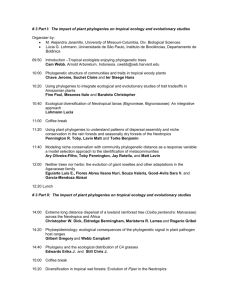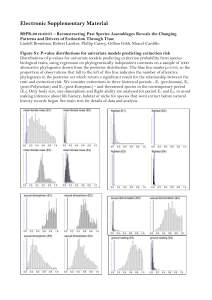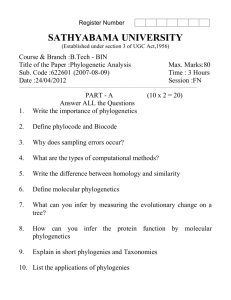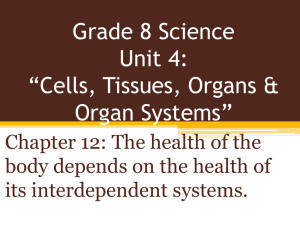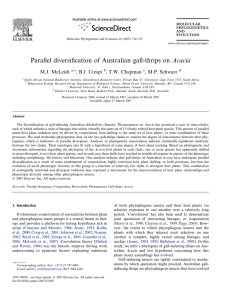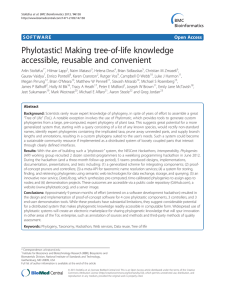Diversity Study Guide
advertisement
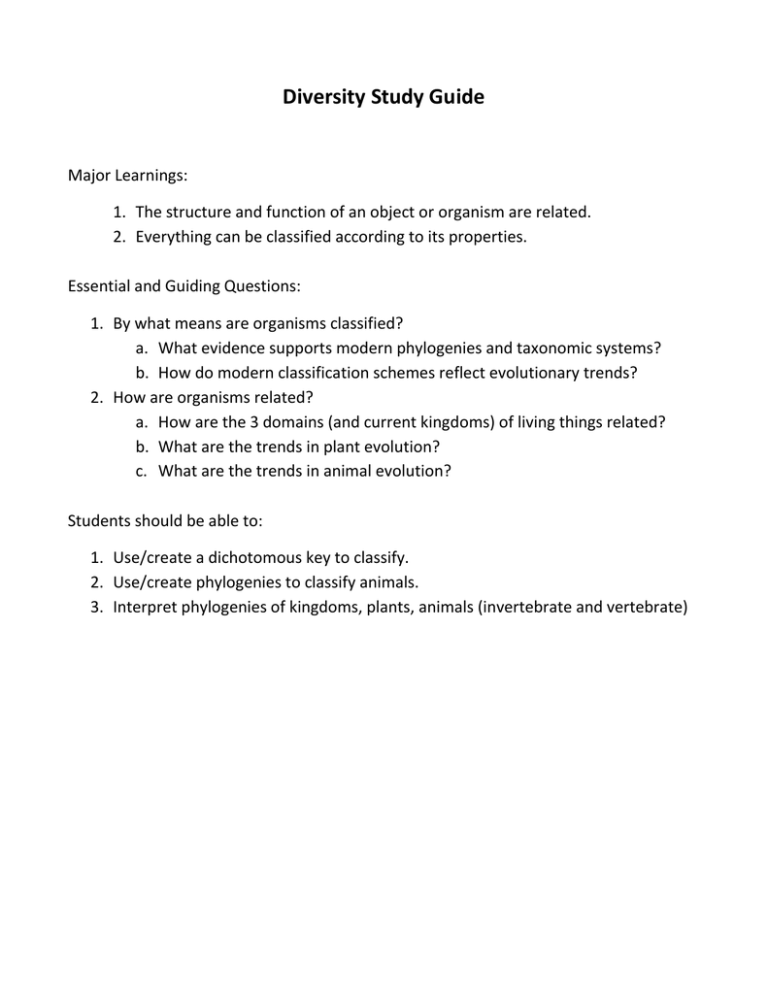
Diversity Study Guide Major Learnings: 1. The structure and function of an object or organism are related. 2. Everything can be classified according to its properties. Essential and Guiding Questions: 1. By what means are organisms classified? a. What evidence supports modern phylogenies and taxonomic systems? b. How do modern classification schemes reflect evolutionary trends? 2. How are organisms related? a. How are the 3 domains (and current kingdoms) of living things related? b. What are the trends in plant evolution? c. What are the trends in animal evolution? Students should be able to: 1. Use/create a dichotomous key to classify. 2. Use/create phylogenies to classify animals. 3. Interpret phylogenies of kingdoms, plants, animals (invertebrate and vertebrate) VOCABULARY TERMS CLASSIFICATION Archae Asymmetrical Bacteria Bilateral Symmetry Clade Cladistics Cladogram Derived Characteristic Domain Endosymbiotic Theory Eukaryote Family Fungi Genus Invertebrates Kingdom Morphology Multicellular Order Phylogeny Phylum Plant PLANTS Angiosperm Aves Anthophyta Blastopore Autotroph Blastula Bryophyta Cephalization Cap/Spore Chilopoda Coniferophyta Chondrichthyes Cotyledon Chordata Eudicot Closed Circulatory System Fruit Cnidaria Gymnosperm Coelomate Magnoliid Complete Digestive System Monocot Cranium Ovule Crustacea Petal Deuterostome Pistil (stigma, style, ovary) Diplopoda Pollen Echinodermata Pterophyta Ectoderm Seed Endoderm Sepal Endoskeleton Sori Exoskeleton Stamen (anther, filament) Germ Layers Vascular Tissue Hermaphrodite Prokaryote Radial Symmetry Scientific Name Segmentation Species Taxonomy Thermophiles Unicellular Heterotroph ANIMALS Incomplete Digestive System Acoelomate Insecta Agnatha Integument Amniote Mammalia Amphibia Mesoderm Amniotic Egg Mollusca Annelida Nematoda Arachnida Nerve Cord Arthropoda Nerve Ring Notochord Open Circulatory System Osteichthyes Platyhelminthes Porifera Protist Protostome Psuedocoelomate Reptilia Tetrapod Urochordata Vertebral Column Vertebrates


